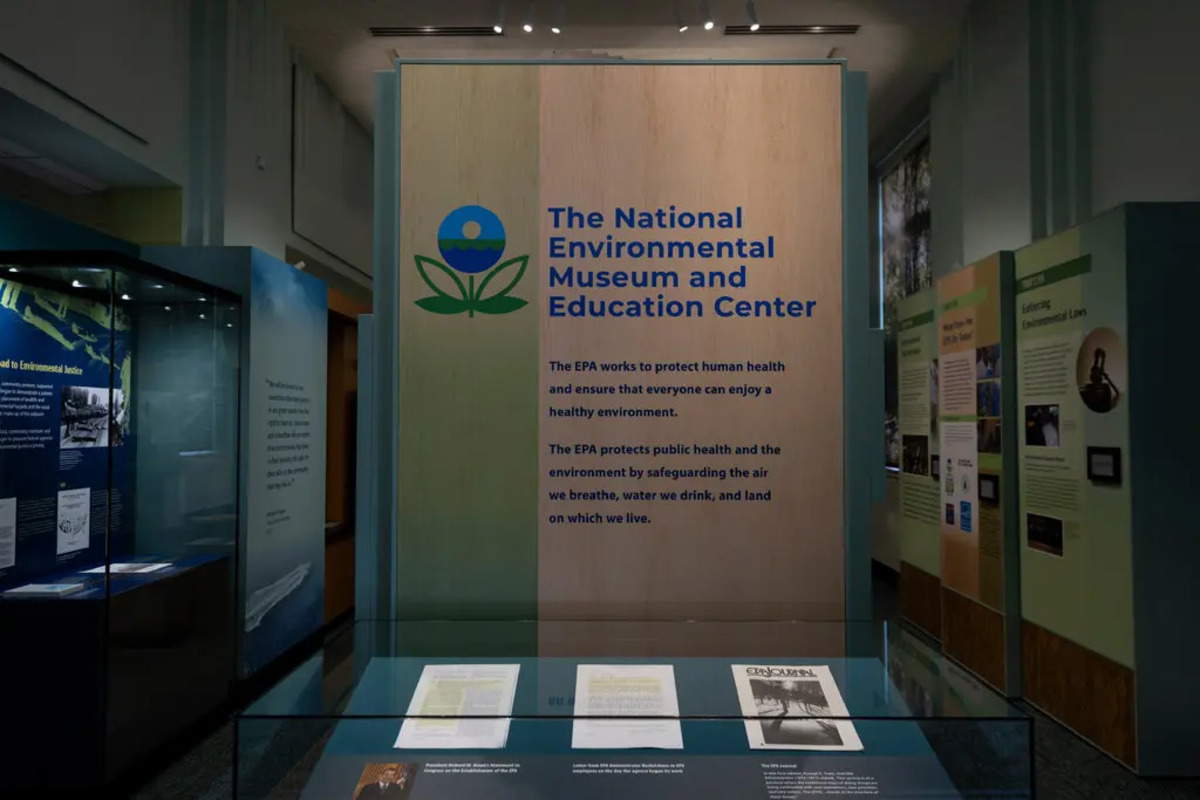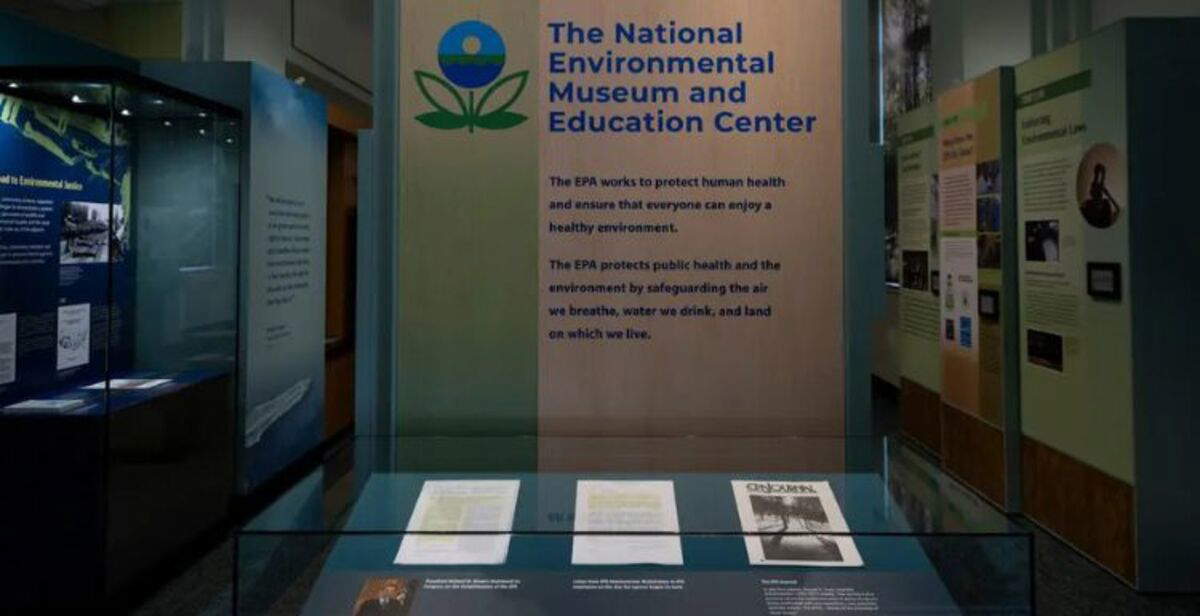US, Trump administration closes the National Museum of the Environment: the reason? "It costs too much"
The National Environmental Museum and Education Center, a museum dedicated to U.S. environmental history located inside theEnvironmental Protection Agency (E.P.A.) headquarters in Washington, D.C. Its closure was decreed by Lee Zeldin, the federal agency’s administrator, who was appointed by President Donald Trump, who justified the decision with the need to contain costs. According to Zeldin’s statements, the museum’s closure is expected to provide taxpayers with an annual savings of about $600,000, in line with a broader cost containment policy that includes a thorough review of expense items related to the operation of the E.P.A. The museum, a 148.18-square-meter facility, had opened in 2016 and was initially housed in an area of the Ronald Reagan International Trade Building. Last May, it had been relocated and expanded inside the E.P.A. building with a $4 million investment. The facility, while modest, was a landmark to trace the history of the agency and its initiatives in environmental protection. Between May 2024 and February 2025, the museum saw fewer than 2,000 outside visitors, a number that raised questions about its actual usefulness.
“Our commitment to responsible stewardship of taxpayer dollars remains unwavering as I continue to monitor agency spending line by line,” said Administrator Zeldin. “The $4 million cost to build this one-room, sparsely attended museum inside the E.P.A. with $600,000 in operating costs per year is another example of wasteful spending by the Biden administration that could have instead been spent to remedy environmental problems in forgotten communities. Not to mention that the previous administration curated the contents of the museum with a heavy focus on ’environmental justice’ instead of focusing on the core mission of the E.P.A. While Americans have been struggling with skyrocketing prices and inflation, the Biden administration has spent millions on this ’museum’ to proliferate a political agenda. Gone are the days of funding personal partisan projects at the expense of American taxpayers and the agency’s mission to protect human health and the environment.”
“The museum did not employ E.P.A. staff,” said agency spokeswoman Molly Vaseliou. “Approximately one-third of the museum’s annual costs went to two security guards to guard the museum during midweek opening hours.”
The museum, despite being free admission, has incurred high operating costs per visitor, according to the Trump administration. Lee Zeldin presented an account of the expenses incurred, which included $123,000 per year for cleaning and maintenance of the grounds, $207,000 for security, $54,000 for maintenance of magnetometers and X-ray scanners, another $54,000 for preservation of exhibits, and $40,000 for operation of audiovisual equipment. Some criticism then focused on the contents of the museum, particularly the absence of reference to achievements during the first Trump administration in the area of environmental policies. During that time, improvements in air quality were recorded and the first national action plan to address perfluoroalkyls (PFAS), chemicals considered harmful to the environment, was adopted. The omission of these issues was therefore interpreted by some as favoring a certain perspective in the environmental policy narrative. Zeldin, as administrator of the E.P.A, said he wanted to reduce waste and optimize the use of public resources. The closure of the museum is therefore part of the first measures taken in this direction. He also announced the cancellation of more than $22 billion in grants and contracts deemed non-essential, with the aim of reducing public spending and improving the agency’s efficiency.

The canceled exhibits
Inside the museum were exhibits of documents and objects related to the history of the E.P.A. Among the measures mentioned were those taken during Donald Trump’s tenure, including the repeal of more than 100 air and water protection regulations, along with the signing in 2020 of a bill to eliminate hydrofluorocarbons, a gas responsible for the greenhouse effect. Another section of the museum referenced the Joe Biden administration’s subsequent commitment to the creation of a climate task force. The Zeldin administration pursued a reorganization of the E.P.A., redefining the agency’s approach from that adopted under President Biden. Among the changes introduced is the elimination of references to clean energy and environmental justice initiatives. For example, the Great American Comeback Initiative, a structured program referencing the Clean Air Act and Clean Water Act for air and water quality and the goal of “restoring American energy dominance” with policies to support the fossil fuel industry, was launched.
The museum’s closure has been met with perplexity by former E.P.A. executives, who question both the economic rationale and the narrative provided by Zeldin. “This is not about saving money,” declares Manish Bapna, president and CEO of the Natural Resources Defense Council. “Trump’s call to cut EPA funding by 65 percent would leave families and communities exposed to toxic chemicals, polluted air and contaminated water and land, while cutting federal spending by just a tenth of a cent on the dollar. They are acting to dismantle protections for clean water and air, increase U.S. dependence on the fossil fuels that are causing the climate crisis, and hamper a booming clean energy industry that is creating jobs, cutting costs for consumers and making the country more energy secure.”
“I doubt very much that this is about cost savings,” stressed Stan Meiburg, executive director of the Andrew Sabin Family Center for Environment and Sustainability and former deputy administrator at the Environmental Protection Agency from 2014 to 2017. “This is about trying to erase the past. Nationally, the E.P.A. provides about $1.1 billion in grants for state environmental work, and that is critical because most of the day-to-day operations and environmental protection for permitting, enforcement, and monitoring are done by state and local governments in conjunction with the E.P.A. Any cut in that funding will significantly damage the ability of state programs, let alone the E.P.A, to carry out the activities required by the nation’s environmental laws.”
According to several observers, the closure of the museum would not only be a choice dictated by budgetary reasons. The removal of the sections devoted to environmental justice and climate policies of the previous administration raises questions about the real motives behind the decision. Some critics believe that Zeldin’s initiative represents an attempt to redefine the narrative on the role of the E.P.A., highlighting some aspects at the expense of others.
 |
| US, Trump administration closes the National Museum of the Environment: the reason? "It costs too much" |
Warning: the translation into English of the original Italian article was created using automatic tools. We undertake to review all articles, but we do not guarantee the total absence of inaccuracies in the translation due to the program. You can find the original by clicking on the ITA button. If you find any mistake,please contact us.




























